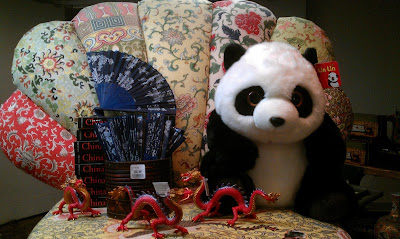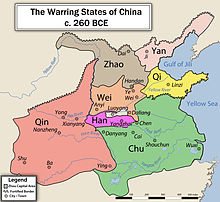Colloquial Jyutping Cantonese
|
Standard Written Chinese
|
English
|
||
嗰
|
gó
|
那
|
nà néi
|
That or those
|
Continuing from my review of the Omniglot Colloquial Cantonese vs Mandarin Phrases sheet, the word, "that" or "those" is next to be reviewed on the
list. If you haven’t seen my previous post on 呢 vs. 這, then I encourage you to read that one first since 嗰 vs 那 follows
the same concept.
Once again, I will use the following shortcuts:
(CS) = Cantonese Speech (CW) = Cantonese Writing
(M) = Mandarin (TM)= Taiwanese Speech or Southern China Mandarin)
Essentially, 嗰 and 那 have the same meaning of “that” which
indicates a noun that is observed by the speaker. In English, we differentiate the words “that”
in reference to singular nouns and “those” in reference to plural nouns, but in
Chinese, we do not have to change the words. We only quantify the noun to make
it clear we are talking about more than one. For example, in the sentence, “Those
five computers are heavy.”, we can say in Chinese, “That five [classifier]
computers are heavy.” and it would make sense because quantifying the computers
by stating that there are five of them already creates a plural meaning. If
somebody wanted to talk about a computer, the Chinese would say “one
[classifier] of computer...”
As I have mentioned in my 呢 vs. 這 post,
the word “that” is usually accompanied by a classifier when mentioning a noun.
Refer to this list for a thorough list of Chinese classifiers:
Using classifiers can be tricky when switching between Cantonese and Mandarin because certain classifiers are only used mainly for one
language or the other. You will have to be aware of it by experience. Since
this post is not about classifiers, I will keep the confusion to a minimum by
using classifiers that are shared between the Cantonese and Mandarin languages.
Examples:
That knife is sharp.
That
[classifier for handful of] knife is sharp.
嗰把刀好利. (CS = go2 baa2 dou1 hou2
lei6)
那把刀很利.
(CW = naa5 baa2 dou1 han2 lei6)
那把刀子很利. (4/nei2 ba3 15 hen3 li4)
That man is tall.
That
[classifier for individuals] man is tall.
嗰個男人好高. (CS = go2 go3 naam4 jan2 hou2 gou1)
那個男人很高. (CW = naa5 go3 naam4 jan2 han2 gou1)
那个男人很高. 4/nei2 ge4 22 hen3 1)
Remember to use the general classifier 個/个 when in doubt of which classifier to
use.
The Different Meanings of Na – Demystifying 那
While 嗰 has a
distinct meaning for the word, “that,” 那 can
be confusing even to native speakers of Chinese.
哪 na3 vs 那 na4
Many people confuse 哪 with 那 and I learned that 那 can
be used interchangeably to mean 哪 even
though it isn't truly correct.
Let’s learn their original meanings:
那 = na4 = that, then
哪 = na3 = which, where, how, what
In both cases, the Cantonese pronunciation is naa5.
One easy way to remember the tone is to practice pointing at
an object and use the mighty fourth tone to say “na4!” (that!). For other
meanings, use na3 to remind yourself that it is about uncertainty and you need
a “mouth” radical for verification (the mouth radical is the extra mouth
character 口 on the left side of the word 哪 when compared to 那).
Example 1
Here’s a fun Taiwanese or Southern Chinese Mandarin example
that would help you understand it better. We will be having a little fun with
the word, 哪裡 meaning “where” and “那裡” meaning “there.”
我把刀子在哪裡?
I
[handful classifier] knife at where inside?
Where is my knife?
TM: wo3 ba3 dao1 5 zai4 33?
You [handful classifier] knife at that
inside.
Your
knife is [over] there.
TM: ni3 ba3 dao1 zi5 zai4 43.
Note: The term, 那裡 and 那裏 are interchangeable and have the same meaning. You
might see one term or the other.
See? All it takes is one character to alter the meaning. Alternatively,
we may see the phrase with the character 哪 written as a 那 instead with the meaning of "where, etc.":
你把刀(子)在那裡?
The sentence is also correct as a lot of people write it
that way, but technically, it’s incorrect. If a person wrote it that way, it is
up to the reader to determine which “na” is the correct one based on context.
In standard Mandarin (Beijing and
northern area of China):
我把刀子在哪兒? M: wo3 ba3 dao1 zi5 zai4 3?
你把刀子在那兒. M: ni3 ba3 dao1 zi5 zai4 nar4.
In Spoken Cantonese:
我把刀喺邊度呀? CS :
ngo5 baa2 dou1 hai2 bin1 dou6 aa3?
你把刀喺嗰度呀. CS :
nei5 baa2 dou1 hai2 go2 dou6 aa3.
In Written Cantonese:
我把刀在何處?
CW: ngo5 baa2
dou1 zoi6 ho4 cyu3?
你把刀在那裡.
CW: nei5 baa2 dou1 zoi6 naa5 leoi5.
I’m aware that there are many ways to
say and write the word, “where” in Chinese. I just used one of the terms that I
am comfortable with.
Example 2
We can also make a sentence with 哪 meaning “which.”
哪把刀子是我的?
Which [handful classifier] knife is mine?
Which
knife is mine?
M: 3/nei2 ba3 dao1 zi5 shi4 wo3
de5?
That [handful classifier] knife is
yours.
That
knife is yours.
M: 4/nei2 ba3
dao1 zi5 shi4 ni3 de5.
Alternatively:
哪把刀是我的?
CW: naa5 baa2 dou1 si6
ngo5 dik1?
那把刀是你的.
CW: naa5 baa2 dou1 si6 nei5
dik1.
邊把刀係我嘅/㗎?
CS: bin1 baa2 dou1 hai6 ngo5 ge3/gaa3?
(㗎= a contraction of 嘅 ge3 +呀 aa3. When speaking, use either 嘅 or 㗎 as a final particle, but not both.)
嗰把刀係你嘅/㗎.
CS: go2 baa2 dou1 hai6 nei5 ge3/gaa3.
那 na4 vs nei2 Pronunciation
You may have noticed that sometimes na4 is pronounced nei2
and many people do not understand when to use nei2. Thanks to an online user
named “Staarkali,” on the wordreference.com forum, I have been enlightened.
From my research, the word nei2 is not to be used directly
before a noun, but before a classifier. Therefore, in the previous example 1, you
may not write or say:
你把刀子在那裡. TM: ni3 ba3 dao1 zi5 zai4 3. (The word, inside 裡, is a noun.)
你把刀子在那兒. M: ni3 ba3 dao1 zi5 zai4 nei2 er5. (The word, 那兒, is a noun.)
The nei2 pronunciation is actually a contraction of the phrase “那一”
meaning, “that one.”
那一 = (M) na4 yi1 (C) naa5 jat1 =
that one
If you say it fast enough, slurring the two words
together, you can hear yourself saying something that sounds close to the
“nei2” sound. The “nayi” sound becomes “nei.” Consequently, the 一 character becomes implied. This contraction only applies to the Mandarin language.
Using the previous example once more with 一 being omitted:
那(一)把刀子在那裡.
TM: nei2 ba3 dao1 zi5 zai4 3.
那(一)把刀子在那兒. M: nei2
ba3 dao1 zi5 zai4 nar4.
That one [handful classifier] knife is
at there.
That one knife is over there.
Note: The pinyin spelling for 那一 is contracted to “nei2.”
呢 nei1 vs 那 nei2
I want to make a final note to my readers to not confuse the
two “nei1” sounds.
We learned 呢 ni1/nei1
previously to mean the word for “this” in Cantonese. Since we learned in Mandarin that 那 na3 can become nei2, could the same contraction happen for the Cantonese 呢 ni1? The sound "nei1" also exists for the the character, 呢.
While I do not find any
evidence that 呢 nei1 = this one 呢一,
I do believe that perhaps nei1 is used as more of a regional
pronunciation than for grammar reasons because Cantonese speakers still use the
phrase “呢一”
exactly the way it is read and written without omitting the “一” part.
Since the pronunciation nei1 is so close to the pinyin
pronunciation nei2, I hope everybody does not confuse the two since jyutping
nei1 means “this” and pinyin nei2 means “that.” We want to communicate our true
meaning at all times. This topic is something that I find myself confused about
so that is why I am mentioning it.
So, I hope you enjoyed my second post in the Omniglot
Colloquial Cantonese vs Mandarin Phrases series. I will see you next time when
we expand on what we already know to learn “here” and “there.” In the meantime,
see if you can incorporate the vocabulary you've learned so far in both Cantonese and Mandarin.



.jpg)




